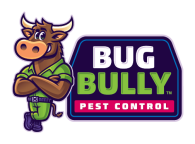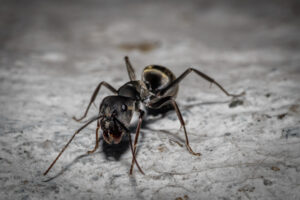What Homeowners and Business Owners in Central Massachusetts Need to Know
At Bug Bully Rodent & Pest Control, spring is one of the busiest times of the year for termite calls—and for good reason. As temperatures begin to rise in Central Massachusetts, termites become more active and visible. Homeowners, apartment renters, and restaurant owners in Worcester, Framingham, Northborough, Concord, and surrounding areas need to be especially vigilant this time of year. Termites can go undetected for months, even years, causing expensive damage to wooden structures and foundations. In spring, however, they tend to leave behind specific signs that you can spot if you know what to look for. Identifying these signs early can save your property from costly repairs and ongoing infestations.
In this article, we’ll cover the most common signs of termites in spring, answer some frequently asked questions, and explain how working with a trusted termite exterminator like Bug Bully can help protect your property long term.
Why Are Termites More Active in Spring?
Spring brings moisture, warmth, and longer daylight hours, all of which encourage termite colonies to become more active. Subterranean termites, which are common throughout Central Massachusetts, begin their reproductive season during this time. This process is known as “swarming,” where winged termites (called swarmers) emerge in large numbers in search of new places to establish colonies. You might notice this happening indoors or near foundations, windows, or lights.
Warmer temperatures also allow termite workers to increase their activity underground and within wood structures. If they’ve been feeding quietly through the winter, you’re more likely to see signs of their presence now that spring is here.
What Are the Most Common Signs of Termites?
Spring is the perfect time to spot early warning signs of termite infestations. Here are the main indicators to keep an eye on:
Winged Termites or Swarmers
The most visible sign of a termite issue in spring is the sudden appearance of winged termites. These insects are often mistaken for flying ants, but a close look reveals key differences. Termite swarmers have straight antennae, a broad waist, and wings of equal size. If you find these insects near windows, doors, or light fixtures, it’s a strong sign that a termite colony is either inside your property or very close by.
Swarmers may also show up in commercial kitchens or dining areas, which can be particularly concerning for restaurant owners who need to maintain health and safety standards. Seeing swarmers inside is never a good sign—it often means the colony is nesting within the building.
Discarded Wings
After swarmers find a new nesting location, they shed their wings. These delicate, translucent wings are often left behind on windowsills, countertops, or floors. If you’re noticing small piles of wings around your home or business, contact a termite control professional right away. This is one of the clearest signs that termites are not only nearby, but possibly already established.
Mud Tubes Along Walls or Foundations
Subterranean termites require moisture to survive, so they build protective mud tubes to travel between their underground nests and the wood they consume. These pencil-sized tunnels are often found on the exterior of foundation walls, inside basements, crawl spaces, or even along plumbing lines. Mud tubes are a telltale sign of termite activity and shouldn’t be ignored. They serve as highways for termites and protect them from predators and dehydration.
In older homes or apartment buildings in Worcester and Northborough, these mud tubes often go unnoticed behind stored items or inside unfinished basements. Regular inspections can help uncover them early.
Hollow-Sounding or Damaged Wood
Another common sign of termites is wood that sounds hollow when tapped or appears blistered, wavy, or bubbled. This happens because termites eat wood from the inside out, leaving the surface looking deceptively intact. In some cases, the wood may crumble when touched. If you notice any of these changes in baseboards, flooring, support beams, or door frames, it’s time to call a termite exterminator.
For restaurant owners, this kind of damage can occur around wooden window frames, cabinetry, or doorways—anywhere moisture and wood are present together. Left untreated, this damage can spread and create safety concerns for staff and customers alike.
Frass or Termite Droppings
Drywood termites (less common in Central Massachusetts but still possible) leave behind tiny wood-colored pellets known as frass. These droppings are usually found near entry points or infested wood and may resemble sawdust or coffee grounds. Subterranean termites, on the other hand, typically use their waste as building material for their mud tunnels and don’t leave behind visible droppings.
Still, if you see mysterious debris around wooden fixtures or walls, it’s worth having a pest control expert take a closer look.
Tight-Fitting Doors and Windows
As termites consume wood, they can cause the structure to warp. One often-overlooked sign of termites is difficulty opening or closing doors and windows. This can result from swelling in the wood caused by both moisture and damage. In the spring, this issue is more common due to the increase in humidity and termite activity. If your doors and windows used to function smoothly but suddenly feel tight or misaligned, termites could be to blame.
Can I Spot Termites Myself?
While many of the signs above are visible to the average property owner, termite infestations can still be difficult to diagnose without experience. Termites are elusive by nature and tend to hide in walls, foundations, or under flooring. By the time obvious damage appears, the colony may have been active for months or longer.
That’s why we recommend an annual termite inspection by a licensed termite control expert. At Bug Bully Rodent & Pest Control, we know exactly where to look, what species are likely present, and how to catch infestations early. Our team works with both homeowners and business owners to create customized treatment and prevention plans.
How Do I Know If It’s Ants or Termites?
This is one of the most common questions we hear during springtime. Termites and flying ants look similar at a glance, but there are a few easy ways to tell them apart. Ants have elbowed antennae, a pinched waist, and wings of different sizes. Termites have straight antennae, a uniform waist, and wings that are equal in length. If you’re unsure, save a sample and give us a call—we’ll be happy to identify it for you and let you know what your next steps should be.
What Should I Do If I See Signs of Termites?
If you notice any signs of termite activity this spring, don’t wait. The sooner you act, the easier and less expensive the solution will be. Here’s what we recommend:
- Don’t disturb the area. Avoid tearing into walls or mud tubes, as this can cause the colony to relocate and make it harder to treat.
- Contact a professional termite exterminator. Bug Bully will inspect your property, confirm the presence of termites, and recommend treatment options.
- Schedule a treatment. We use the latest eco-friendly, proven termite control methods to eliminate infestations safely and efficiently.
How Does Bug Bully Treat Termites?
At Bug Bully Rodent & Pest Control, we offer comprehensive termite treatment services across Central Massachusetts. Depending on the situation, we may use liquid barrier treatments, termite baiting systems, or direct wood treatments. All our products are EPA-approved and designed to eliminate the colony while keeping your home, family, or business safe.
We also provide post-treatment monitoring and prevention plans to make sure termites don’t return. For restaurant owners, we work discreetly and efficiently to avoid disruptions and ensure compliance with health regulations.
Can I Prevent Termites in the First Place?
While no method is 100% foolproof, there are several ways to reduce the risk of termites:
- Fix leaky faucets and plumbing to reduce moisture
- Keep firewood and mulch away from the foundation
- Seal cracks in the foundation and walls
- Ensure proper ventilation in crawl spaces and attics
- Schedule annual termite inspections
By staying proactive, property owners in Worcester, Framingham, Northborough, and Concord can protect their buildings year-round.
Why Choose Bug Bully Rodent & Pest Control?
Our team has spent over a decade helping Central Massachusetts stay pest-free with expert service, friendly support, and reliable solutions. We know how stressful a termite problem can be, especially in spring when everything else is waking up and getting busier. Whether you’re a first-time homeowner in Concord or managing a busy kitchen in Framingham, we’re here to help with tailored termite control plans that work.
We offer free inspections, fast scheduling, and a satisfaction guarantee on all termite treatments. Call Bug Bully Rodent & Pest Control today and let us handle the termites, so you can focus on enjoying your home or running your business with peace of mind.











